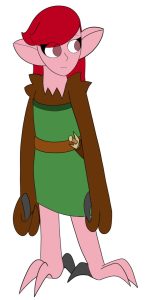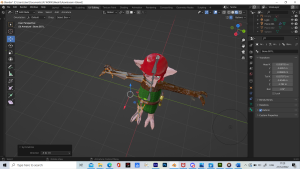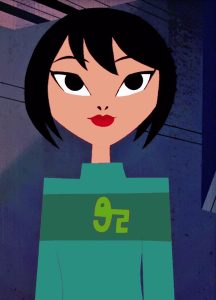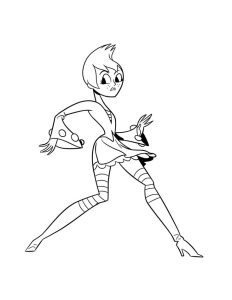I had very little time to complete my assignment for Mike’s module due to procrastination and persistent focusing on other modules. Over the course of a single day, I set to work on multi-resing, texturing, rigging, and posing my Asanbosam character.
Before I started modelling my asanbosam character, I had to conceptualise her first. She was originally designed with wings and would have had them modelled using planes and solidified beizer curves, but that would have proved to difficult to rig and develop. So I replaced them with hands with iron claws as many illustrations of asanbosam were depicted. Her overall design was also simplified for further ease of modelling.



Blocking out the model was generally easy as I simply had to block out my character’s body using primitives such as cylinders, planes, Spheres and cubes. Sculpting the details was also rather fun as was multi resing the details later on.
The first pothole I got stuck on was how to apply the armature to the other side of my model. Due to the way my model was placed, the symmetrising always ended up wrong.

I later learned that I needed to rotate my model 180 or so degrees, and then apply the symmetrise there, and it worked.

The next pothole I ran was the model resetting when I applied the armature. I realised I had to move the armature to be the first thing on the modifier. I then had to join all the parts up so that they could all be exported as a single FBX file.
This is the final result of my model.
Asanbosam – 3D model by InkLightning (@InkLightning) [180dd5f] (sketchfab.com)
Over the course of my time with Mike’s module, I learned a lot about taking references from other sources. I largely get my ideas from my head, so trying to get refs from Gennedy Tartakovsky made me think about how to conceive my ideas.



I found the retopology part the most frustrating and difficult part of my modelling process. It was rather annoying trying to link all the polygons together and ensuring not one was our of place. putting all the parts together properly for export was also rather difficult, as was the armature.

I enjoyed texturing the most out of the process as it was a reprieve from the mapping and retopologising that came before. Multi resing was also quite fun and not as stressful as I thought it would be.
Overall I would like to 3D model again, but next time, limit myself to simpler shapes so that I have more experience for modelling more complex shapes.
